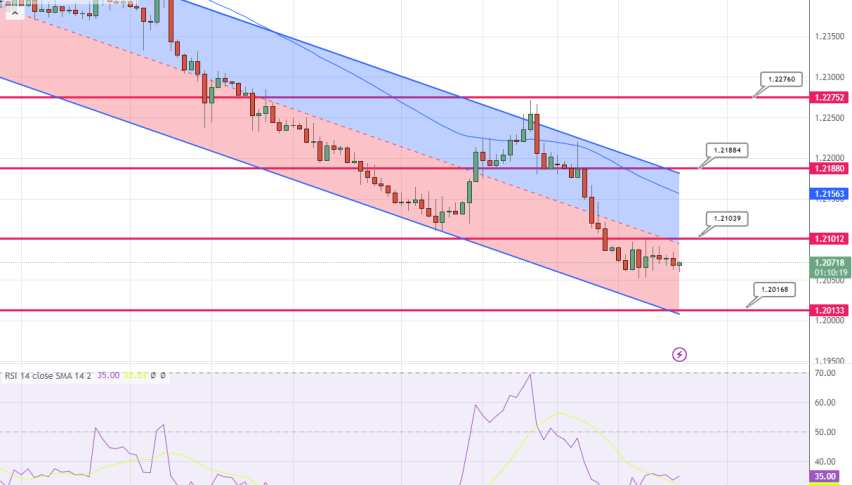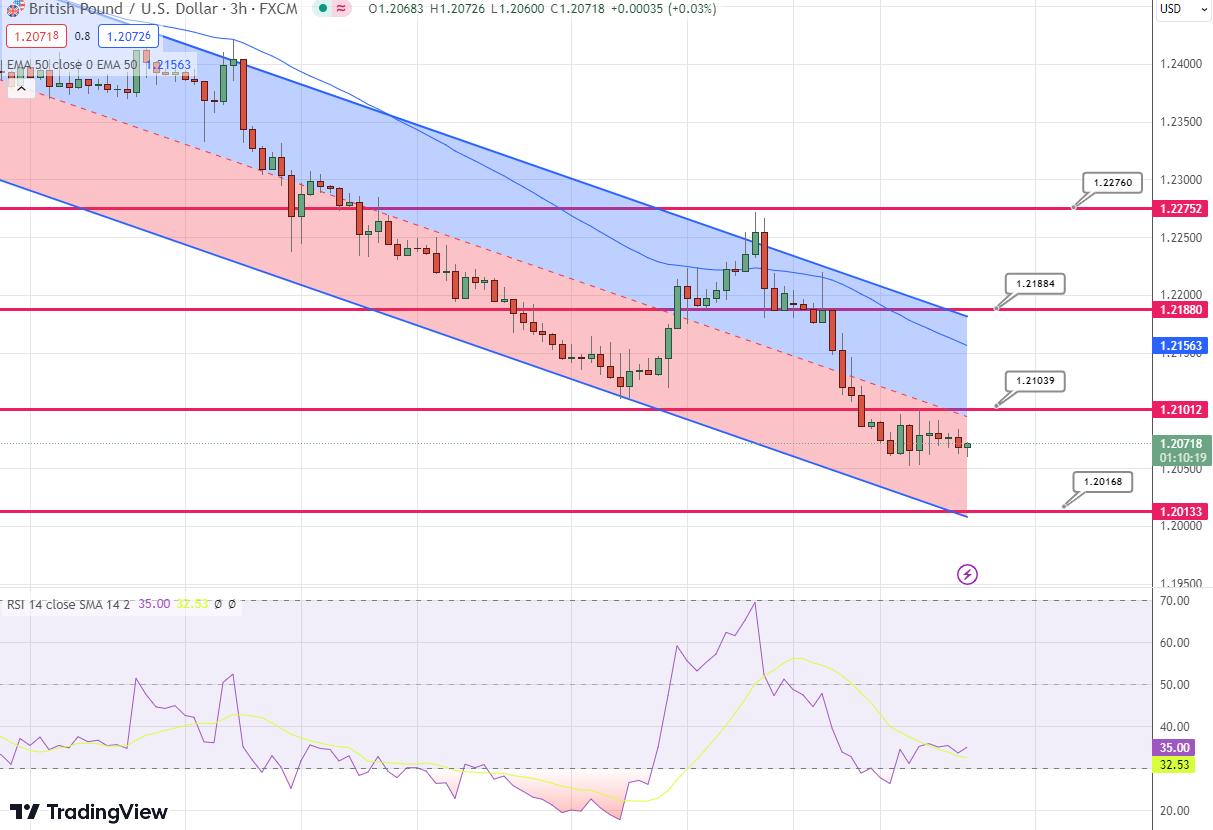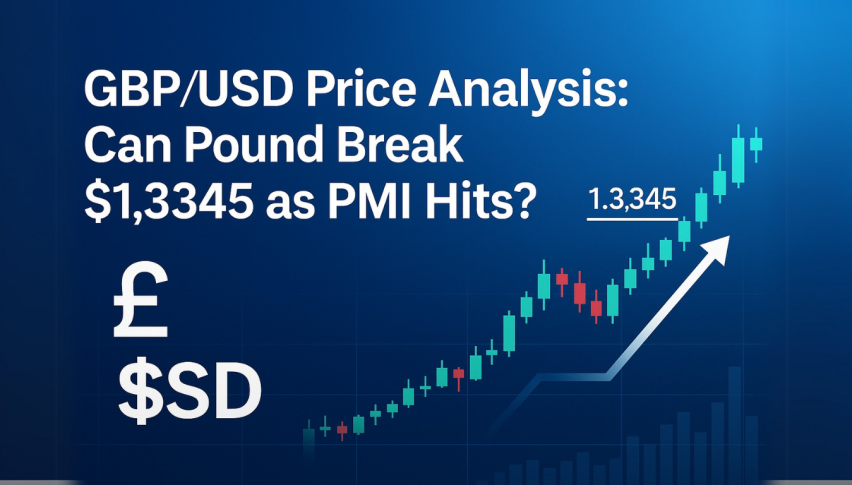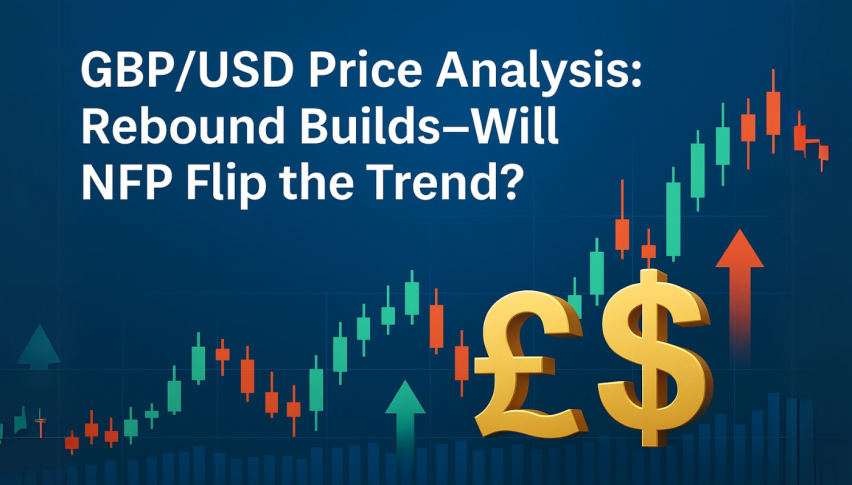GBP/USD Lingers Near Recent Lows: Hawkish Fed Tone and Strong USD Weigh Heavily
The GBP/USD currency pair lingers in a neutral zone for the second consecutive day this Wednesday, hovering perilously close to its lowest point since March 16, reached a day prior.
Arslan Butt•Wednesday, October 4, 2023•2 min read

The GBP/USD currency pair lingers in a neutral zone for the second consecutive day this Wednesday, hovering perilously close to its lowest point since March 16, reached a day prior. During the Asian trading hours, the pair was nestled below the 1.2100 benchmark, signaling a potential continuation of the downtrend that originated nearly three months ago from a high last seen in July.
GBP/USD Technical Insights
Currently, the GBP/USD pair is oscillating around the 1.2080 mark in the mid-American afternoon, facing resistance at the 1.2100 juncture. The 1.2000 level emerges as the subsequent bearish focal point, presenting a notable psychological resistance. An accumulation of significant stop losses below this level could, if activated, expedite the pair’s descent towards the 1.1900 territory.
The buoyant position of the US Dollar (USD), nearing its 10-month pinnacle, is influenced predominantly by the Federal Reserve’s (Fed) hawkish inclination. This assertive stance by the Fed serves as a significant drag on the GBP/USD dynamics. The overarching sentiment among investors is that the US central monetary authority will persistently constrict its fiscal measures, maintaining elevated interest rates for an extended period. Corroborating this sentiment, numerous Fed representatives have recently advocated for an additional rate increment by the year’s end, aiming to realign inflation to the 2% objective.
Additionally, the recently divulged JOLTS report for the month indicated approximately 9.61 million job vacancies in August, a significant rise from July’s adjusted tally of 8.92 million. Such figures intimate the resurgence of wage inflation, potentially prompting the Fed to extend its rate elevation trajectory into 2024. Consequently, this propels the 10-year US bond yield to unprecedented highs in 16 years, bolstering the USD’s position.
Simultaneously, persistent declines in the US fixed-income landscape amplify apprehensions regarding economic challenges that may arise from escalating borrowing costs. This environment douses the fervor for risk-associated assets, indirectly boosting the allure of the haven-centric US dollar.
Compounding this is the Bank of England’s (BoE) unexpected decision to maintain the status quo last month, exerting added pressure on the British Pound (GBP) and inhibiting any rally in the GBP/USD pair.

Given the prevailing fundamental scenario, it’s apparent that bearish traders hold the upper hand. However, caution is advised, given the “oversold” indication from the daily Relative Strength Index (RSI). For immediate cues, the market’s attention pivots to the impending final UK Services PMI, followed by key US data releases—the ADP private-sector employment report and the ISM Services PMI—scheduled for the upcoming North American trading session.
- Check out our free forex signals
- Follow the top economic events on FX Leaders economic calendar
- Trade better, discover more Forex Trading Strategies
- Open a FREE Trading Account
ABOUT THE AUTHOR
See More
Arslan Butt
Index & Commodity Analyst
Arslan Butt serves as the Lead Commodities and Indices Analyst, bringing a wealth of expertise to the field. With an MBA in Behavioral Finance and active progress towards a Ph.D., Arslan possesses a deep understanding of market dynamics.His professional journey includes a significant role as a senior analyst at a leading brokerage firm, complementing his extensive experience as a market analyst and day trader. Adept in educating others, Arslan has a commendable track record as an instructor and public speaker.His incisive analyses, particularly within the realms of cryptocurrency and forex markets, are showcased across esteemed financial publications such as ForexCrunch, InsideBitcoins, and EconomyWatch, solidifying his reputation in the financial community.
Related Articles
Comments
0
0
votes
Article Rating
Subscribe
Login
Please login to comment
0 Comments
Oldest
Newest
Most Voted
Inline Feedbacks
View all comments



